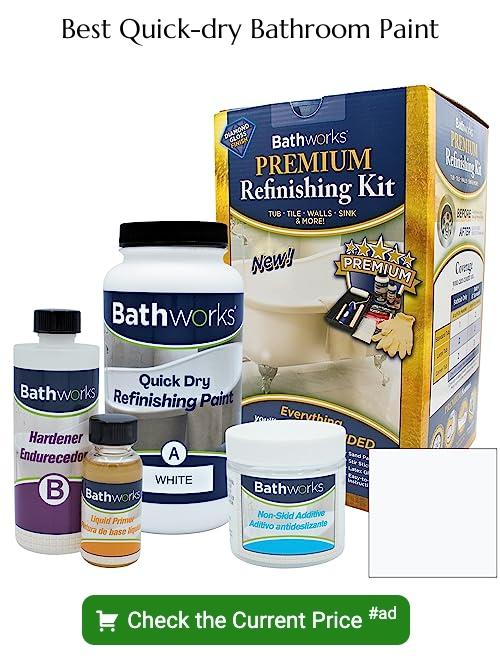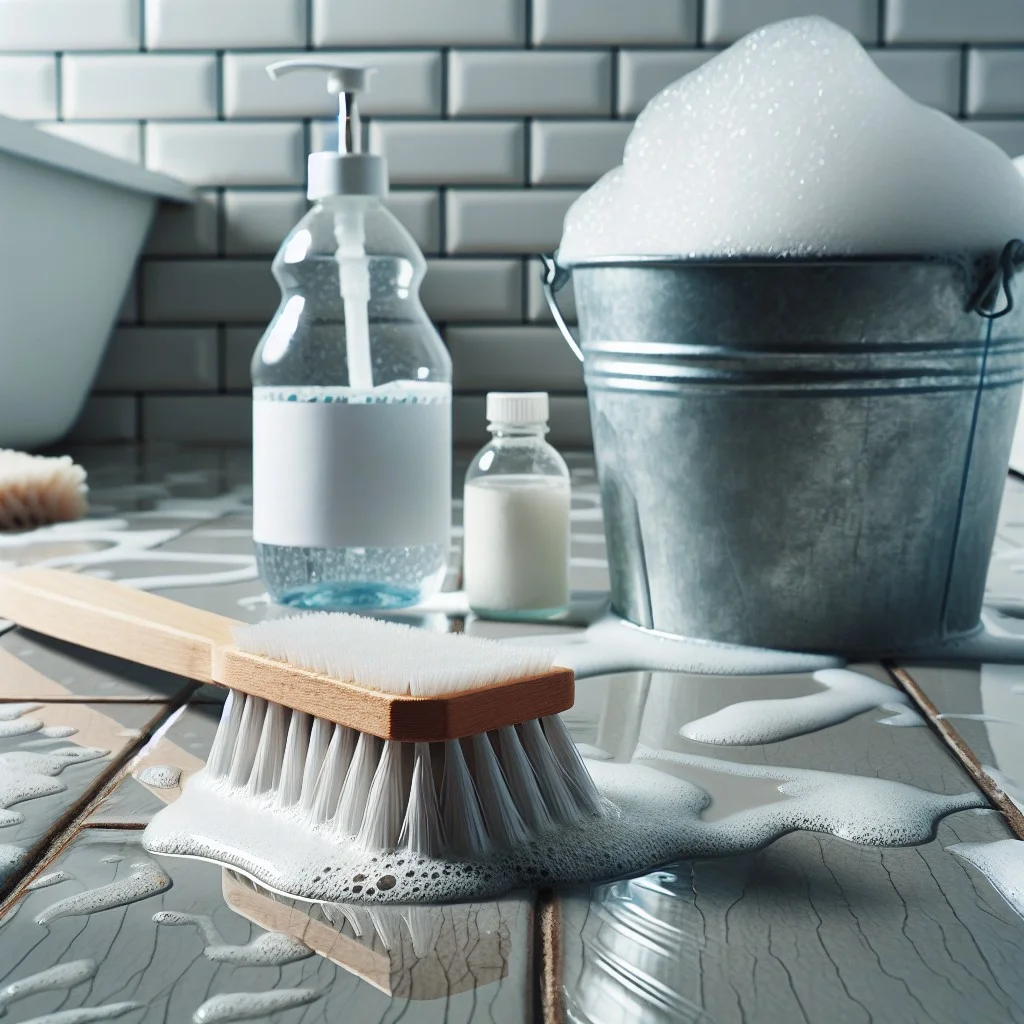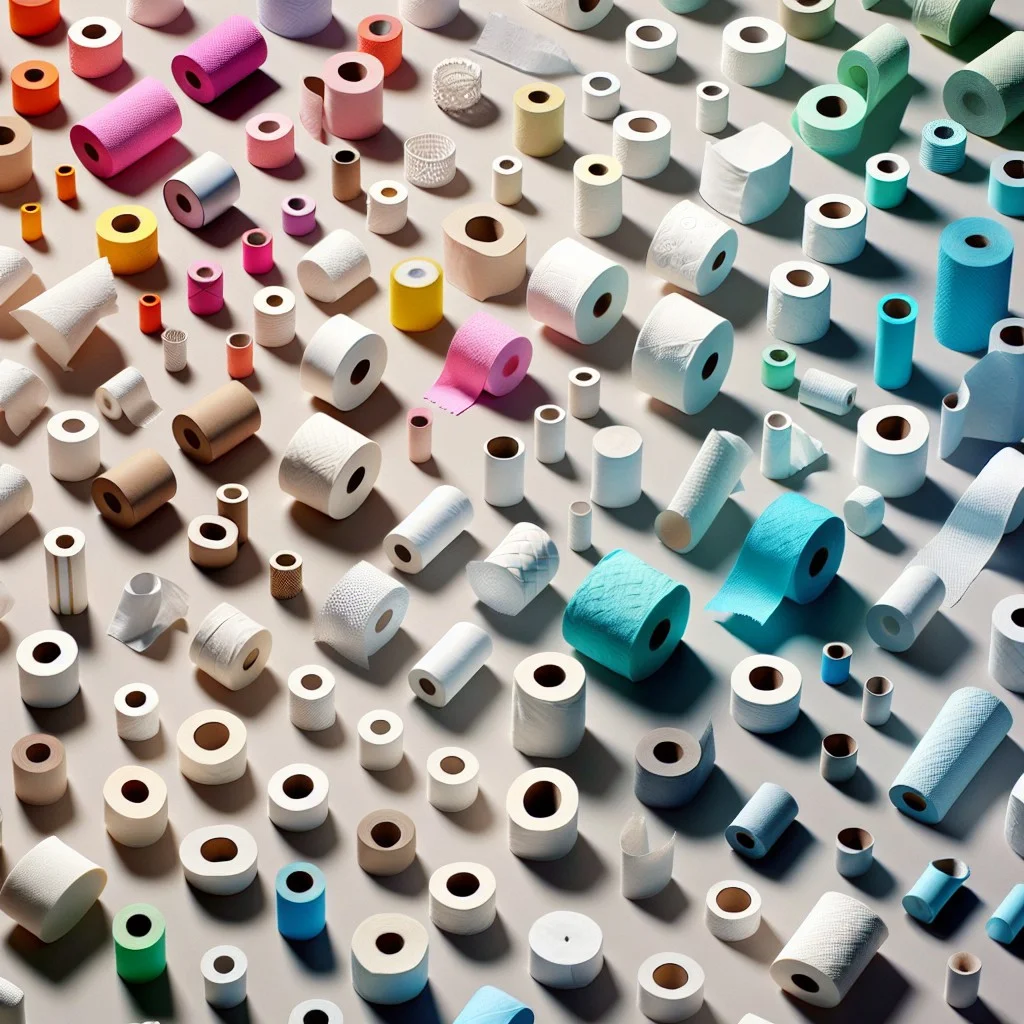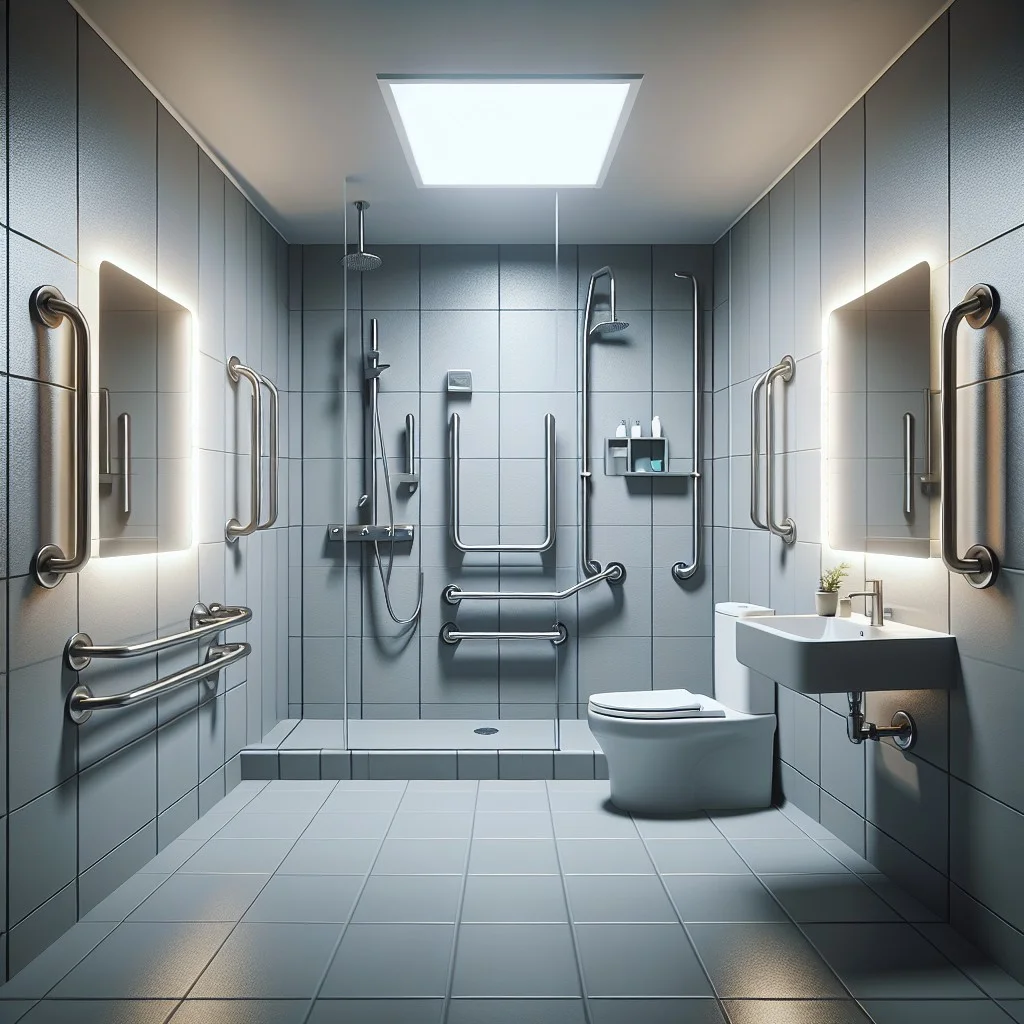Last updated on
Ensure a wait time of at least 24 to 48 hours before using your shower after painting, depending on the type of paint used, though it’s ultimately best to wait until the paint is fully cured—which can take up to 30 days—for optimal results and to avoid potential damage or peeling.
Freshly painted bathrooms beckon with their crisp, clean aesthetics, but jumping into a hot shower too soon can turn your hard work into a streaky disappointment. Understanding the drying and curing times for different paints—be it the quick-dry allure of latex, the patience-testing oil-based options, or the durable yet demanding epoxy—is crucial to preserving that flawless finish.
Whether you’re itching to take a steamy shower after a fresh coat or wondering if the wall’s tackiness is a red flag, this article spells it all out. We’ll dive into not only when you can safely shower but also share tips on how to expedite the drying process without compromising on quality. Stick around for a comprehensive guide that ensures your bathroom paint job stands the test of time—and showers.
Key takeaways:
- Latex paints: Dry in 1 hour, cure in 2-3 weeks
- Oil-based paints: Dry in 6-8 hours, cure in 2-3 weeks
- Epoxy paints: Dry in several days, cure in 30 days
- Wait a few days before showering, check paint tackiness
- Maximize ventilation, use dehumidifier, apply thin coats
What's Inside
Dry Times By Paint Types

Different paints have varying dry times that are crucial to consider before the steam and moisture from a shower come into play:
1. Latex Paints: These water-based paints dry to the touch within an hour and are ready for a second coat in about 4 hours. However, they require at least 2-3 weeks to fully cure.
2. Oil-Based Paints: These take longer to dry, with at least 6-8 hours before being touch dry, and like latex, require a curing time of approximately 2-3 weeks.
3. Epoxy Paints: Commonly used for tiles and cabinetry in bathrooms, epoxy paints can take several days to dry and around 30 days to fully cure.
Understanding these dry times ensures you can plan your bathroom usage appropriately post-painting and prevent damage to the new coat. It’s the difference between a flawless finish and one that requires a touch-up sooner than expected.
Should Paint Cure Before I Shower?
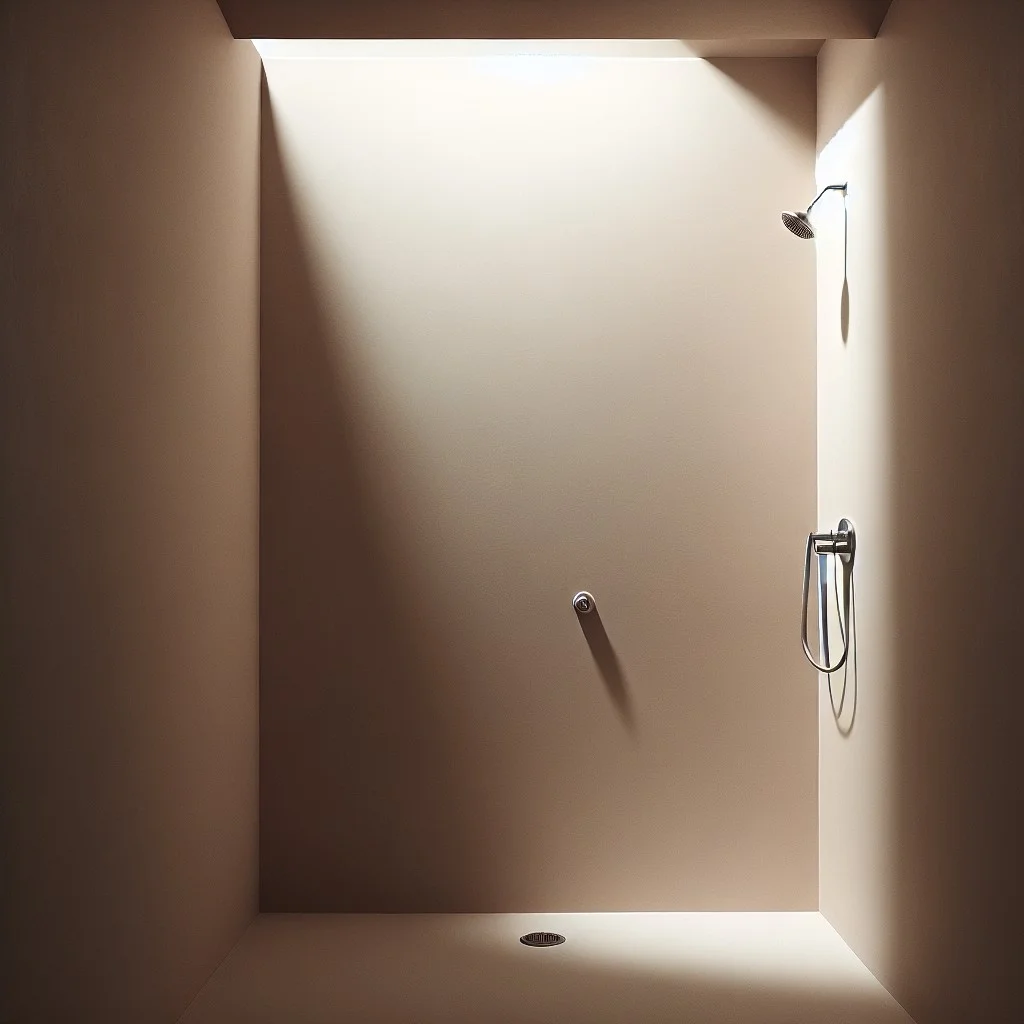
Allowing paint to cure before taking a shower is crucial because curing goes beyond mere drying. Here’s why:
1. Resistance to moisture: Cured paint provides a more durable barrier against the high humidity levels inherent to bathrooms.
2. Adhesion strength: With full curing, the paint adheres better to the surface, reducing the risk of peeling or blistering due to steam.
3. Longevity of finish: A completely cured paint surface maintains its intended finish and color, preventing untimely touch-ups or repainting.
4. Mold and mildew prevention: Moisture from showers can penetrate uncured paint, promoting mold growth beneath the surface.
Patience during the curing process ensures your bathroom walls stay beautiful and protective for longer. Consider your shower a mini spa retreat, and give your paint the time it needs to prep for the many relaxing showers ahead.
Is a Few Days Really Long Enough to Wait?
Determining whether a few days is a sufficient waiting period before showering in a freshly painted bathroom hinges on several factors, including paint type, humidity, ventilation, and the layers applied.
- Latex paints typically dry to the touch within an hour but may require 2-4 weeks to fully cure.
- Oil-based paints often take longer to dry to the touch, roughly 6-8 hours, and could need up to a month to cure.
- High humidity and poor ventilation can extend drying and curing times, as they prevent the evaporation of solvents from the paint.
- For the best results, apply thin coats. Thicker layers take longer to dry and may remain tacky for an extended period.
- Using a fan or dehumidifier can help accelerate the drying process by promoting air circulation and reducing moisture in the air.
Waiting a few days may be acceptable for latex paints if the room is well-ventilated and humidity is controlled. However, assessing the paint’s surface for tackiness can provide a practical indication of readiness. If it’s no longer sticky to the touch, a gentle shower with limited steam may not harm the finish, but longer wait times are prudent for complete curing.
Tricks to Speed Up Paint Drying Time
Maximizing ventilation is a game-changer; open windows or use a fan to circulate air and whisk away moisture.
Opting for a dehumidifier pulls excess humidity from the room, allowing the paint to solidify faster.
If time is truly of the essence, consider a hairdryer on a low, gentle setting, carefully applied to the walls, to aid in the drying process.
Also, employing thin, even coats when painting accelerates drying; a thick coat may seem efficient, but it’s a trap for extended drying times.
Lastly, check the weather before beginning your project—if possible, choose a dry day with low humidity.
This creates an ideal environment for quick drying, shaving time off your wait before that much-deserved shower.
The Importance of Priming
Priming your bathroom walls before painting is a crucial step that often goes overlooked, yet it sets the stage for a durable and long-lasting finish. Here’s why:
- Priming seals porous surfaces, ensuring that paint adheres evenly and doesn’t soak into the wall, leading to a consistent sheen and color.
- It provides a protective layer that reduces the likelihood of peeling or blistering from the steam and humidity common in bathrooms.
- Primers are formulated to resist mold and mildew, which are prevalent in the damp bathroom environment.
- Using a primer can help in covering up any existing stains, meaning fewer coats of paint are necessary, saving time and paint in the long run.
- It makes the painting surface smoother, which is especially important in a bathroom where the finish needs to withstand frequent cleaning.
Remember, a little effort in priming can go a long way towards the overall success and longevity of your paint job.
Did I Choose the Correct Type of Paint?
Selecting the right paint for your bathroom is crucial because high moisture levels demand durable, mildew-resistant formulations. Here are key characteristics to ensure your choice is spot-on:
1. Type of Paint: Opt for either semi-gloss or high-gloss finish, as these surfaces repel moisture effectively compared to flat or eggshell finishes.
2. Mildew Resistance: Look for paints specifically labeled as mildew-resistant, which contain additives that prevent mold and mildew growth, a common problem in humid environments.
3. Quality: Invest in high-quality paint brands that offer longer-lasting protection and better coverage, even if they cost a bit more upfront.
4. VOC Level: Consider paints with low volatile organic compounds (VOCs) to ensure better air quality, especially in a small, enclosed space like a bathroom.
Understanding these points will help you choose a paint that not only dries properly but also stands up to the unique challenges of a bathroom environment.
How Long Should I Let the Paint Dry?
Understanding the drying time for bathroom paint is crucial because premature exposure to moisture can ruin your paint job. Let’s dive into some essential points:
1. Typical Drying Times:
- Latex paints typically require at least 1 to 2 hours before they are dry to the touch, but waiting for 4 hours is better for a second coat.
- Oil-based paints need a good 6 to 8 hours before they’re dry to the touch, with 24 hours recommended before applying another coat.
2. Cure Times:
- A freshly painted bathroom might feel dry within hours, but the curing process takes longer. Latex paints can take up to 4 weeks, whereas oil-based paints might cure in about 7 days.
- Curing is when the paint has completely hardened and reached maximum durability, making it more resistant to moisture.
3. Consider Environmental Factors:
- High humidity and low temperatures can extend drying times significantly.
- A well-ventilated bathroom allows paint fumes to dissipate and can speed up the drying process.
4. Specific Manufacturer Guidelines:
- Always check the paint can for the manufacturer’s recommended drying times as there can be variances between different products.
By respecting these guidelines, you’ll ensure the paint adheres well and maintains a resilient finish for humid conditions post-shower.
How Can I Make My Paint Job Last Longer?
Maximizing the longevity of your bathroom paint job hinges on consistent maintenance and smart choices prior to painting. To start, always opt for high-quality paint formulated for bathrooms; it’s designed to withstand moisture and resist mildew. Apply a primer appropriate for humid environments to create an adhesive base and prevent peeling.
Once the paint is applied, maintain proper ventilation during showers to minimize moisture buildup. Using a bathroom fan or leaving the door open helps. Regularly clean the walls with a gentle, non-abrasive cleaner to remove any soap scum or grime that could degrade the paint film over time.
Touch-ups are your friend. Address chips or scratches quickly to prevent moisture from seeping beneath the paint layer. Lastly, consider investing in a dehumidifier if your bathroom is especially prone to high humidity, keeping the environment stable and paint intact for years to come.
FAQ
How long should paint dry in a bathroom before showering?
For optimal results, one should wait a minimum of 24 hours before showering in a freshly painted bathroom, although following specific guidelines offered by the paint manufacturer is equally crucial.
How long after painting bathroom tiles can you shower?
After painting bathroom tiles, you should wait for at least 24 hours before showering to allow the paint to fully cure.
Will paint hold up in a shower?
Yes, paint will hold up in a shower provided it’s a high-gloss, semi-gloss or satin variant, as these types cure to a harder finish, resist moisture effectively and are easier to clean.
How long should paint dry before putting stuff on it?
For an optimal result, it is advisable to wait between 5 to 10 days before placing objects directly against your freshly painted walls or hanging paintings.
What are the recommended steps to ensure proper paint drying in the bathroom?
To ensure proper paint drying in the bathroom, it is recommended to use a fan or dehumidifier, let in fresh air if possible, use appropriate paint, apply thin coats, and allow sufficient drying time in between coats.
Can condensation from a shower impact newly painted walls?
Yes, condensation from a shower can impact newly painted walls by causing dampness, peeling, or even discoloration if the paint isn’t specifically designed for high-moisture environments.
Is there a specific type of paint that dries quicker suitable for bathrooms?
Yes, acrylic and latex-based paints are quick-drying and are suitable for bathrooms.
